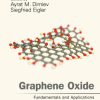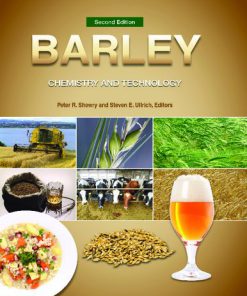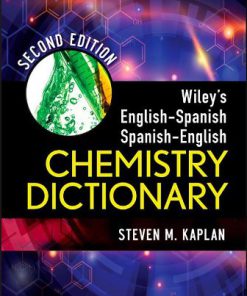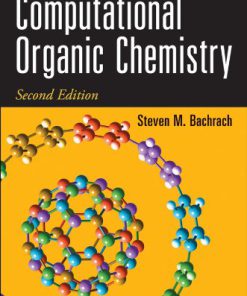Chemistry 9th Edition by Steven Zumdahl, Susan Zumdahl ISBN 1285692357 9781285692357
$50.00 Original price was: $50.00.$25.00Current price is: $25.00.
Chemistry 9th Edition by Steven Zumdahl, Susan Zumdahl – Ebook PDF Instant Download/Delivery: 1285692357, 978-1285692357
Full dowload Chemistry 9th Edition after payment
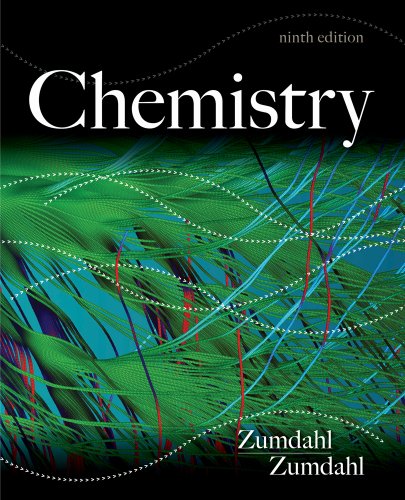
Product details:
ISBN 10: 1285692357
ISBN 13: 978-1285692357
Author: Steven Zumdahl, Susan Zumdahl
Chemistry 9th Table of contents:
-
Basic Measurements and Techniques:
- Determination of Mass – An introductory experiment to practice basic lab techniques like weighing.
- Use of Volumetric Glassware – Understanding the proper use of tools like burettes, pipettes, and volumetric flasks.
- Density Determinations – Methods for determining the density of various substances.
- Boiling Point and Melting Point Determination – Classical methods for measuring phase transition temperatures of substances.
- Solubility of a Salt – Exploring solubility and factors influencing dissolution.
-
Separation and Identification Techniques:
- Resolution of Mixtures (Filtration, Distillation, Chromatography) – Introducing methods to separate components of mixtures.
- Thin-Layer Chromatography (TLC) and Paper Chromatography – Techniques used in organic chemistry and analytical chemistry for compound separation and identification.
- Identification of a Substance – Using physical and chemical properties to identify an unknown substance.
-
Stoichiometry and Composition:
- Limiting Reactant – Determining the limiting reagent in a chemical reaction.
- Percentage Composition and Empirical Formula – Determining the empirical formula of compounds like magnesium oxide.
- Water in Hydrates – Quantitative analysis of the water content in hydrates.
- Iron(III)-Phenol Reaction – A stoichiometric experiment related to redox reactions.
-
Thermodynamics and Gas Laws:
- Calorimetry – Measuring heat changes in chemical reactions.
- Gas Laws (Charles’s Law, Graham’s Law, Molar Mass of Volatile Liquid) – Exploring properties of gases and their behavior under different conditions.
-
Spectroscopy and Molecular Properties:
- Spectroscopy (Atomic Hydrogen and Emission Spectra) – Investigating light absorption and emission spectra.
- Molecular Shapes and Structures – Using models or computational methods to predict molecular geometry.
- Length of a Molecule – Using molecular properties to determine physical dimensions at the molecular level.
-
Acids, Bases, and Equilibria:
- Titrations (Acid-Base, Commercial Antacids) – Quantitative analysis using titration techniques to determine concentrations.
- Chemical Equilibrium – Investigating the principles of reversible reactions, including titrimetric and spectrophotometric methods for equilibrium constants.
- Solubility Product (Ksp) of Silver Acetate – A classic experiment to determine the solubility product constant of a sparingly soluble salt.
-
Electrochemistry and Redox:
- Chemical Cells and Electrolysis – Basic experiments in electrochemistry, including studying galvanic cells and electrolytic processes.
- Redox Titration (Iron Determination) – Determining the concentration of iron in a sample using redox reactions.
-
Gravimetric and Analytical Methods:
- Gravimetric Analysis (Chloride and Sulfate Ion) – Techniques where mass changes are measured to determine ion concentrations.
- Qualitative Analysis (Cations and Anions) – Identifying unknown ions in samples using qualitative analysis techniques.
-
Organic Chemistry and Synthesis:
- Organic Preparations (Esters, Salicylic Acid Derivatives) – Synthesis and purification of organic compounds.
- Polymerization (Preparation of Nylon, Amorphous Sulfur) – Laboratory techniques to prepare and study synthetic polymers.
-
Advanced Applications and Real-World Chemistry:
- Determination of Vitamin C in Fruit Juices – Practical applications of chemical analysis for determining the concentration of substances in everyday products.
- Preparation of Coordination Complexes (Copper(II)) – Synthesis of coordination compounds and exploring their properties.
Common Sections in Each Experiment:
- Objective: Clear statement of what the experiment aims to achieve.
- Introduction: Background information, including theory and context for the experiment.
- Apparatus/Reagents Required: List of all materials, chemicals, and equipment needed.
- Procedure: Step-by-step instructions for performing the experiment.
- Pre-Laboratory Questions: Questions to help prepare and understand key concepts before starting the experiment.
- Results/Observations: Space to record data, observations, and any measurements taken during the experiment.
- Questions: Post-lab questions to assess understanding, draw conclusions, and analyze results.
People also search for Chemistry 9th:
fundamentals of analytical chemistry 9th edition pdf
organic chemistry 9th edition
zumdahl chemistry 9th edition
mcmurry organic chemistry 9th edition
wade organic chemistry 9th edition pearson
You may also like…
Chemistry
History - Military History
The Devil s Garden 1st Edition by Steven Zaloga 0811752770 9780811752770
Biology and other natural sciences
Barley chemistry and technology Second Edition. Edition Steven E. Ullrich (Editor)
Education Studies & Teaching
Reference - Thesauri
Biology and other natural sciences
Computational Organic Chemistry 2nd Edition Steven M. Bachrach
Chemistry - Inorganic Chemistry


